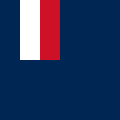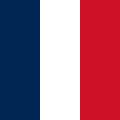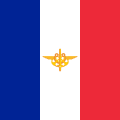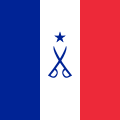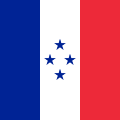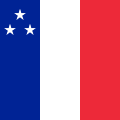
The national flag of France is a tricolour featuring three vertical bands coloured blue, white, and red. It is known to English speakers as the Tricolour, although the flag of Ireland and others are also known as such. The design was adopted after the French Revolution, where the revolutionaries were influenced by the horizontally striped red-white-blue flag of the Netherlands. While not the first tricolour, it became one of the most influential flags in history. The tricolour scheme was later adopted by many other nations in Europe and elsewhere, and, according to the Encyclopædia Britannica has historically stood "in symbolic opposition to the autocratic and clericalist royal standards of the past".

The Alawite State, officially named the Territory of the Alawites, after the locally-dominant Alawites from its inception until its integration to the Syrian Federation in 1922, was a French mandate territory on the coast of present-day Syria after World War I. The French Mandate from the League of Nations lasted from 1920 to 1946.

The official flag of Wallis and Futuna is the French national flag, as it is a French territory. Wallis and Futuna has a locally used unofficial flag which bears the French flag in the canton.

The flag of Samoa was first adopted from 24 February 1949, for UN Trusteeships, and continuously applied for the state's independence on 1 January 1962. It consists of a red field with a blue rectangle in the canton. The blue rectangle bears the Southern Cross: four large white stars and one smaller star.
As a result of the Syrian Civil War since 2011, there are at least two flags used to represent Syria, used by different factions in the war. The incumbent government of the Syrian Arab Republic led by the Ba'ath Party uses the red-white-black tricolour originally used by the United Arab Republic, while Syrian opposition factions such as the Syrian National Coalition use the green-white-black tricolour known as the ''Independence flag'', first used by Mandatory Syria.

The flag of Uganda was adopted on 9 October 1962, the date that Uganda became independent from the British Empire. It consists of six equal horizontal bands of black (top), yellow, red, black, yellow, and red (bottom); a white disc is superimposed at the centre and depicts the national symbol, a grey crowned crane, facing the hoist's side.

The White Ensign, at one time called the St George's Ensign because of the simultaneous existence of a crossless version of the flag, is an ensign worn on British Royal Navy ships and shore establishments. It consists of a red St George's Cross on a white field, identical to the flag of England except with the Union Flag in the upper canton.
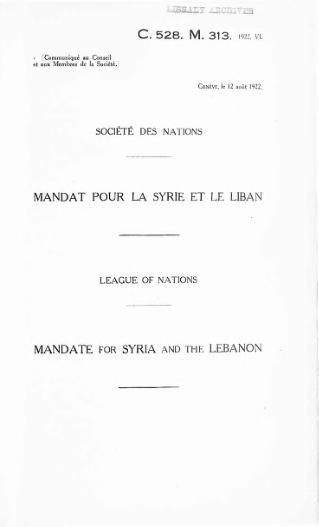
The Mandate for Syria and the Lebanon was a League of Nations mandate founded in the aftermath of the First World War and the partitioning of the Ottoman Empire, concerning Syria and Lebanon. The mandate system was supposed to differ from colonialism, with the governing country intended to act as a trustee until the inhabitants were considered eligible for self-government. At that point, the mandate would terminate and a sovereign state would be born.
A triband is a vexillological style which consists of three stripes arranged to form a flag. These stripes may be two or three colours, and may be charged with an emblem in the middle stripe. All tricolour flags are tribands, but not all tribands are tricolour flags, which requires three unique colours.

Hatay State, also known informally as the Republic of Hatay, was a transitional political entity that existed from 7 September 1938 to 29 June 1939, being located in the territory of the Sanjak of Alexandretta of the French Mandate of Syria. The state was transformed de facto into the Hatay Province of Turkey on 7 July 1939, de jure joining the country on 23 July 1939.

A French ensign is the flag flown at sea to identify a vessel as French. Several such ensigns have existed over the years as well as terrestrial flags based on the ensign motif.

A colonial empire is a collective of territories, either contiguous with the imperial center or located overseas, settled by the population of a certain state and governed by that state.

The Star of India refers to a group of flags used during the period of the British Raj in the Indian subcontinent. India had a range of flags for different purposes during its existence. The Princely states had their own flags which were to be flown alongside the British flag as a symbol of suzerainty. The official state flag for use on land was the Union Flag of the United Kingdom and it was this flag that was lowered on Independence Day in 1947. The flag of the governor-general of India was defaced with the Star of India. The civil ensign and naval ensign were the Red Ensign or Blue Ensign, respectively, defaced with the Star of India emblem.

The State of Aleppo was one of the six states that were established by the French High Commissioner of the Levant, General Henri Gouraud, in the French Mandate of Syria which followed the San Remo conference and the collapse of King Faisal I's short-lived Arab monarchy in Syria.

The State of Damascus was one of the six states established by the French General Henri Gouraud in the French Mandate of Syria which followed the San Remo conference of 1920 and the defeat of King Faisal's short-lived monarchy in Syria.
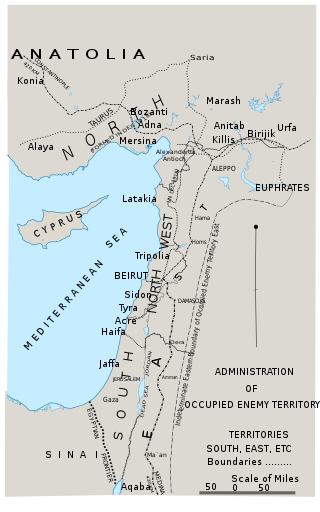
The Occupied Enemy Territory Administration (OETA) was a joint British, French and Arab military administration over Levantine provinces of the former Ottoman Empire between 1917 and 1920, set up on 23 October 1917 following the Sinai and Palestine Campaign and Arab Revolt of World War I. Although it was declared by the British military, who were in control of the region, it was followed on 30 September 1918 by the 1918 Anglo-French Modus Vivendi in which it was agreed that the British would give the French control in certain areas, and the Hashemites were given joint control of the Eastern area per T.E. Lawrence's November 1918 "Sharifian plan".

The State of Syria was a French Mandate state created by decree of 5 December 1924, with effect from 1 January 1925, from the union of the State of Aleppo and the State of Damascus. It was the successor of the Syrian Federation (1922–1924) which had been created by providing a central assembly for the State of Aleppo, the State of Damascus and the Alawite State. The Alawite State did not join the State of Syria.
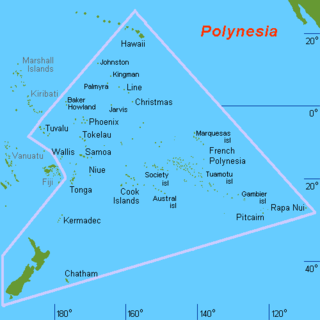
This is a gallery of current and historical flags of Polynesia.












































































































